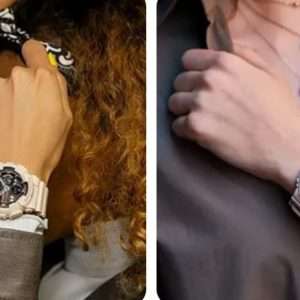Maintaining the pristine condition of your vehicle’s paintwork is a constant battle against the elements, road debris, and the general wear and tear of daily use․ Two popular solutions, ceramic coating and paint protection film (PPF), offer distinct approaches to safeguarding your car’s finish․ Understanding the differences between these technologies is crucial for making an informed decision about which one best suits your needs and budget․ This guide will delve into the features, benefits, and drawbacks of both ceramic coating and PPF, providing you with the knowledge to protect and enhance your vehicle’s appearance for years to come․
Understanding Ceramic Coating
Ceramic coatings are liquid polymers applied to a vehicle’s exterior, creating a durable, hydrophobic layer that bonds chemically with the factory paint․ This layer provides a protective shield against:
- UV rays that can cause fading
- Chemical stains from bird droppings and tree sap
- Minor scratches and swirl marks
- Water spots
Benefits of Ceramic Coating
- Enhanced Gloss and Shine: Ceramic coatings amplify the depth and clarity of your car’s paint, resulting in a showroom-worthy shine․
- Hydrophobic Properties: The coating repels water, making it easier to wash and dry your car․
- Protection from Contaminants: It acts as a barrier against environmental pollutants, preventing them from bonding with the paint․
- Ease of Maintenance: Cleaning becomes simpler and faster due to the hydrophobic nature of the coating․
Exploring Paint Protection Film (PPF)
Paint Protection Film (PPF), also known as clear bra, is a thermoplastic urethane film applied to the painted surfaces of a vehicle․ Unlike ceramic coatings, PPF provides a physical barrier against:
- Rock chips and road debris
- Scratches and scuffs
- Minor dents
Advantages of PPF
- Superior Impact Protection: PPF is significantly more effective at preventing damage from rocks and debris compared to ceramic coatings․
- Self-Healing Properties: Some PPF films have self-healing properties, allowing minor scratches to disappear with heat․
- Long-Lasting Protection: PPF can last for several years, providing consistent protection․
Ceramic Coating vs․ PPF: A Comparative Analysis
The following table highlights the key differences between ceramic coating and PPF:
| Feature | Ceramic Coating | Paint Protection Film (PPF) |
|---|---|---|
| Protection Level | Shields against UV rays, chemical stains, and minor scratches․ | Provides superior protection against rock chips, scratches, and minor dents․ |
| Durability | Typically lasts 2-5 years with proper maintenance․ | Can last 5-10 years, depending on the quality and installation․ |
| Cost | Generally less expensive than PPF․ | More expensive due to material and installation complexity․ |
| Appearance | Enhances gloss and shine․ | Virtually invisible, maintaining the original paint appearance․ |
| Installation | Applied as a liquid; requires proper surface preparation․ | Installed as a film; requires precise cutting and application to avoid bubbles and imperfections․ |
Both ceramic coating and PPF offer valuable protection for your vehicle’s paint․ Ceramic coating excels at enhancing appearance and providing resistance to environmental contaminants, while PPF offers superior impact protection against physical damage․ The best choice depends on your individual needs and priorities․ Some owners opt for both, applying PPF to high-impact areas like the front bumper and hood, followed by ceramic coating over the entire vehicle for comprehensive protection and enhanced aesthetics․ Ultimately, consulting with a professional detailing shop can help you determine the optimal solution for your vehicle․
Maintaining Your Investment: Aftercare for Ceramic Coating and PPF
Regardless of whether you choose ceramic coating, PPF, or both, proper maintenance is essential to maximize their lifespan and effectiveness․ Here’s some advice to keep your vehicle looking its best:
Caring for Ceramic Coated Vehicles:
- Regular Washing: Wash your vehicle regularly, ideally every two weeks, using a pH-neutral car soap․ Avoid harsh chemicals or abrasive cleaners․
- Hand Washing Preferred: While touchless car washes are acceptable, hand washing with a microfiber wash mitt is the gentlest method to prevent swirl marks․
- Avoid Automatic Car Washes with Brushes: The brushes in automatic car washes can scratch the coating and reduce its lifespan․
- Drying Techniques: Use a microfiber drying towel or a blower to dry your vehicle after washing․ This prevents water spots․
- Avoid Polishing: Ceramic coatings are designed to be long-lasting and should not require polishing․ If polishing is necessary, consult a professional detailer․
- Regular Inspection: Periodically inspect the coating for any signs of damage or degradation․
- Top-Up Coatings: Consider applying a top-up coating every 6-12 months to maintain the hydrophobic properties and extend the lifespan of the ceramic coating․
Maintaining Vehicles Protected with PPF:
- Gentle Washing: Use a pH-neutral car soap and a soft wash mitt to wash your vehicle․
- Avoid High-Pressure Washing Near Edges: High-pressure washers can lift the edges of the PPF if aimed directly at them․
- Remove Contaminants Promptly: Address any bird droppings, tree sap, or bug splatters as soon as possible to prevent staining․
- Use a PPF-Safe Polish: If you need to polish the PPF, use a polish specifically designed for paint protection film․
- Avoid Abrasive Cleaners: Do not use abrasive cleaners or compounds on PPF, as they can damage the film․
- Self-Healing with Heat: For self-healing PPF, minor scratches can often be removed by gently applying heat with a heat gun or by leaving the vehicle in direct sunlight․
- Professional Inspection and Repair: If the PPF is damaged, consult a professional installer for repair or replacement․
Professional Installation: A Crucial Factor
The longevity and effectiveness of both ceramic coatings and PPF heavily depend on proper installation․ Choosing a reputable and experienced installer is paramount․ Look for installers who:
- Have Extensive Experience: Ask about their experience with both ceramic coatings and PPF․
- Use High-Quality Products: Ensure they use reputable brands and high-quality materials․
- Provide Warranty: A reputable installer will offer a warranty on their workmanship and the products they use․
- Offer Proper Surface Preparation: Proper surface preparation is essential for both ceramic coatings and PPF to bond correctly․ This includes washing, clay barring, and polishing the paint․
- Have a Clean and Controlled Environment: Installation should be performed in a clean and controlled environment to prevent contamination․
Making an Informed Decision: Consider Your Driving Habits and Environment
Before investing in ceramic coating or PPF, consider your driving habits and the environment in which you typically drive․ If you frequently drive on gravel roads or in areas with heavy road construction, PPF might be the more suitable choice․ If you primarily drive on well-maintained roads and are more concerned with maintaining a glossy appearance, ceramic coating could be a better option․ Ultimately, understanding your specific needs and consulting with a professional detailer will help you make the most informed decision for protecting your vehicle’s paint․




